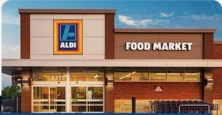BREAKING THE MOLD FOR FOOD STORE BRANDING
KEN BANKS’ BLOG AUGUST 2019
PRESS PLAY>>TO VIEW THIS MONTH’S WELCOME VIDEO
BREAKING THE MOLD FOR FOOD STORE BRANDING
Supermarket marketing is not usually a good topic in a discussion of retail branding.
Yes, there are some chains, like Publix, Wegman’s, H.E.B., HyVee, and Trader Joes, who have built loyalty though the years with providing an outstanding shopping experience with quality operations and marketing. WalMart has taken the top spot as a national chain by having the best price perception of any grocery stores built on their discount store success. Most of the rest of the chains continue to try to build sales with a low-price strategy supported by heavy promotion. Their formal is predictable and redundant with weekly print ads and price promotions. While price is always a factor in the grocery business, the failure of many discount food chains in the past few years verifies that it takes more than a good price on ground chuck to maintain a loyal customer who shops weekly and in many cases more often . Then, there is Aldi.

I first visited Aldi when they had just arrived in the US by breaking into the Chicago metro area several years ago. I was in my last few weeks at Eckerd when our President, Frank Newman, organized a trip for his key executives to the Windy City to do some store visits. We were surprised when we didn’t go to Osco or Walgreen’s, but rather went to this new chain of discount grocery stores from Germany. Some things stood out right away, low prices, neat but spartan stores, mostly private label brands, and crowds of customers.
Well, it not only caught on in Chicago, but Aldi has become quite a phenomenon throughout the U.S. today with more than 1800 stores in 35 states making it the fastest growing chain. The company has done this by creating a cult following that has learned that the lower prices on key items like milk and eggs, is not just pennies lower but as much as 30-40% versus traditional chain across the street. The brand is accentuated by operational differences like no free shopping bags, no baggers at the register, charging a quarter (refundable0 for using a shopping cart. Their dominance of private brands is made up of not just cheaper items but using their European heritage to bring baked goods, meats, cheeses from overseas that are reminiscent of Whole Foods or Trader Joe’s. Like our household, most shoppers don’t switch over exclusively. We love our local Publix and it’s selection and service more than ever. However, there are some trips for which Aldi just makes more sense. The profile of the Aldi customers and their local market areas show that their customer base are not just price shoppers either.

We can’t ignore the warehouse clubs in this discussion. Costco and Sam’s have created quite a niche in the food store business by making the experience exciting in a warehouse atmosphere and by providing quality foods that are exceptional. It’s the rest of the chains that seem to have trouble looking around at what happening and they continue to do more of the same. Repeating the same deals, the same messages, and offering the same experience. The result is that chains like Winn Dixie and BiLo have filed for bankruptcy. SavALot, which looks a lot like Aldi’s model, is deeply in debt and probably won’t survive. Walmart has taken notice and is focusing more of their competitive efforts in the grocery end of the business on an upstart like Aldi. They’ve proven that it’s low prices, but it’s not JUST low prices. You have to live up to the brand in everything you do, everyday.
Aldi is aggressive, but they also have a sense of humor. Take a look at their price comparison TV campaign here. https://youtu.be/tR9arN2J8lk

Recent Comments